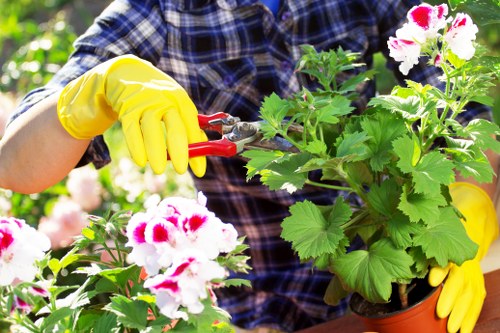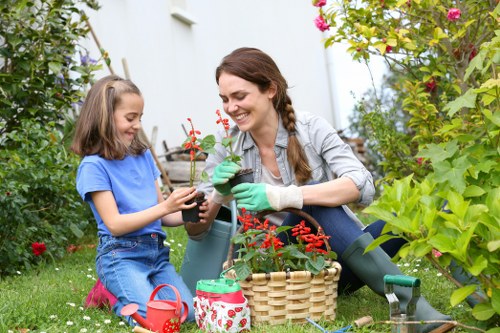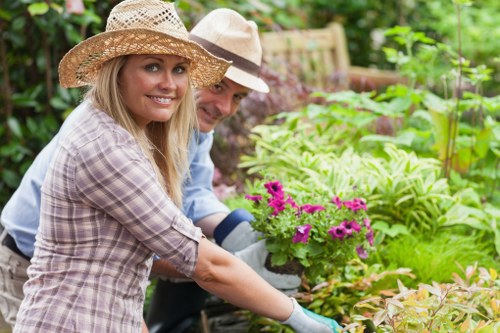Tree Lopping and Removal in Landscape Gardening for Gardeners

Maintaining a beautiful landscape involves more than just planting flowers and trimming shrubs. **Tree lopping and removal** play a crucial role in ensuring the health, safety, and aesthetic appeal of your garden. Whether you're a seasoned gardener or a homeowner looking to enhance your outdoor space, understanding the nuances of tree maintenance is essential.
Trees are living structures that contribute significantly to the environment, providing shade, improving air quality, and adding to the visual landscape of any property. However, over time, trees can become hazardous or negatively impact the design of your garden if not properly maintained.
Tree lopping involves selectively cutting back overgrown branches to improve the tree's structure and health, while tree removal is the process of completely eliminating a tree from your property when it's beyond repair or poses a risk.

Understanding Tree Lopping and Removal
Before diving into the processes of tree lopping and removal, it's important to understand what each entails and when they are necessary.
Tree lopping is primarily performed to maintain the tree's health, remove dead or diseased branches, and shape the tree for aesthetic purposes. It helps in preventing the spread of diseases and reduces the risk of branches falling, which can cause damage to property or injury to people.
On the other hand, tree removal becomes necessary when a tree is too diseased to save, poses a significant safety risk, or is obstructing construction or other landscaping plans. Professional assessment is often required to determine if removal is the best course of action.

When to Consider Tree Lopping and Removal
Signs a Tree Needs Attention
Identifying when a tree needs lopping or removal is critical for maintaining a safe and healthy garden environment. Here are some indicators to watch for:
- Dead or Broken Branches: These can fall unexpectedly, posing safety hazards.
- Tree Health: Signs of disease, such as discolored leaves, fungal growth, or lack of new growth.
- Structural Issues: Trees with weak branches or unstable structures are at higher risk during storms.

Safety Concerns
Safety is a paramount concern when it comes to tree maintenance. Trees that are leaning dangerously, have large cavities, or show signs of decay can become unpredictable and dangerous, especially during adverse weather conditions.
Additionally, trees located near power lines, buildings, or pathways require careful consideration to prevent potential accidents or property damage.
Regular inspections by a certified arborist can help in early detection of issues, allowing for timely lopping or removal before problems escalate.

The Tree Lopping Process
Assessment and Planning
Effective tree lopping begins with a thorough assessment of the tree's health and structure. A certified arborist will evaluate the tree to determine the extent of pruning required and the best techniques to use.
Planning involves identifying which branches need to be removed, the tools required, and ensuring that the process adheres to local regulations and safety standards.
Proper planning ensures that the tree's natural shape is maintained and that its health is not compromised during the lopping process.

Techniques Used in Tree Lopping
There are several techniques employed in tree lopping, each suited to different situations:
- Thinning: Removing selected branches to reduce density and allow more light and air to penetrate the canopy.
- Heading: Cutting back branches to a certain point to encourage bushier growth.
- Reduction: Decreasing the overall size of the tree by cutting back its main branches.
Choosing the right technique depends on the tree species, its current health, and the desired outcome.

Tree Removal Methods
Manual vs. Mechanical Removal
Tree removal can be performed manually or mechanically, each with its own set of advantages and considerations.
- Manual Removal: Involves the use of hand tools like chainsaws, axes, and ropes. Suitable for smaller trees or areas where machinery cannot access.
- Mechanical Removal: Utilizes machinery such as cranes, stump grinders, and excavators. Ideal for larger trees or when precise cuts are required.
The choice between manual and mechanical removal depends on factors like tree size, location, and available resources.

When to Call Professionals
While some tree maintenance tasks can be handled by knowledgeable homeowners, certain situations warrant the expertise of professional arborists:
- Large or hazardous trees that pose safety risks.
- Trees near power lines or structures that require specialized removal techniques.
- Complex lopping jobs that demand professional skill to ensure the tree's health and aesthetics are preserved.
Engaging professionals ensures that tree lopping and removal are conducted safely and effectively, minimizing risks and achieving optimal results.

Benefits of Proper Tree Lopping and Removal
Implementing proper tree lopping and removal practices offers numerous benefits to your landscape and overall property:
- Enhanced Tree Health: Removing diseased or dead branches promotes healthier growth and longevity.
- Improved Safety: Reduces the risk of falling branches or trees causing damage or injury.
- Aesthetic Appeal: Well-maintained trees enhance the beauty and structure of your garden, complementing your landscaping efforts.
- Increased Property Value: A well-maintained landscape can significantly boost the value of your property.
By addressing tree health and safety proactively, gardeners can enjoy a vibrant and secure outdoor environment.

Choosing the Right Landscape Gardener
Selecting a qualified landscape gardener is crucial for effective tree lopping and removal. Here are some factors to consider:
- Qualifications: Ensure the gardener is certified and has the necessary training in arboriculture.
- Experience: Look for professionals with a proven track record in tree maintenance and removal.
- Insurance: Confirm that the gardener has adequate insurance to cover any potential damages or accidents.
Choosing the right professional ensures that tree lopping and removal are carried out safely, efficiently, and to the highest standards.

Maintenance After Tree Lopping and Removal
Pruning and Shaping
Post-lopping maintenance involves regular pruning and shaping to maintain the desired tree structure and health. This includes removing any new growth that may be undesirable and ensuring the tree remains well-balanced.
- Regular inspections to monitor tree health.
- Annual pruning to remove any problematic branches.
- Shaping to maintain the aesthetic form of the tree.
Consistent maintenance helps in preventing future issues and keeps the trees contributing positively to the landscape.

Waste Management
Proper disposal of tree debris is an integral part of the removal process. This includes:
- Chipping branches for mulch.
- Recycling wood materials where possible.
- Ensuring that the disposal complies with local environmental regulations.
Efficient waste management not only keeps your garden tidy but also contributes to environmental sustainability.
Contact us today to schedule a consultation for your tree lopping and removal needs!

Environmental Considerations
Tree lopping and removal should be conducted with environmental considerations in mind. This includes:
- Sustainable Practices: Using eco-friendly methods and tools to minimize impact on the environment.
- Preservation of Wildlife: Ensuring that the removal process does not harm local wildlife or their habitats.
- Replanting: After removal, consider planting new trees to replace those lost, maintaining the ecological balance.
Balancing tree maintenance with environmental responsibility ensures a healthy and sustainable garden ecosystem.

Conclusion
**Tree lopping and removal** are essential services in landscape gardening that contribute to the overall health, safety, and beauty of your garden. By understanding when and how these services should be performed, gardeners can ensure their outdoor spaces remain vibrant and secure.
Whether you're dealing with overgrown branches, diseased trees, or planning a complete tree removal, partnering with experienced and qualified professionals is key to achieving the best results.
Book your service now and take the first step towards a healthier, more beautiful garden!



